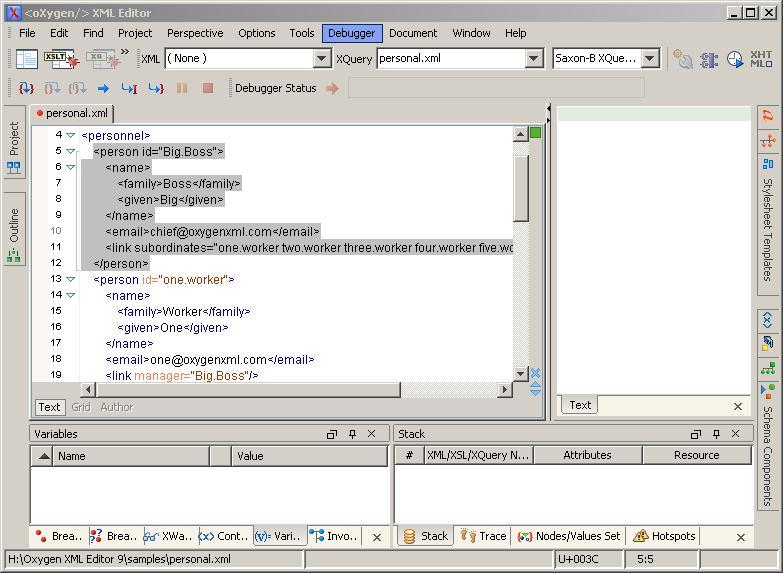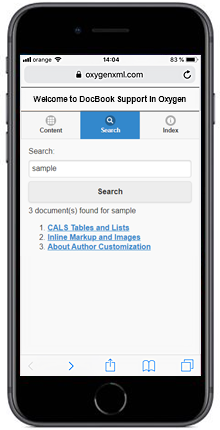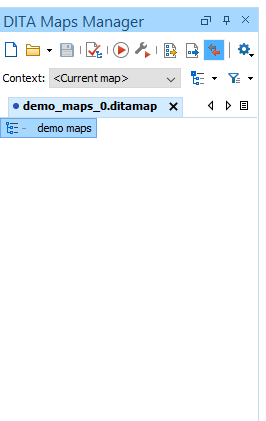

- #Oxygen xml editor dita how to#
- #Oxygen xml editor dita pdf#
- #Oxygen xml editor dita software#
- #Oxygen xml editor dita plus#
The standard href attribute is ignored but plain-text URLs are automatically rendered clickable in PDF output, at least. bookmeta/author for simple author names.Only these few elements produce any output:

DITA 1.2 replaced the old bkinfo element with a much more expansive bookmeta element, but the FO style sheets in DITA OT 1.5.4 still largely refer to bkinfo instead of bookmeta. However, DITA OT 1.5.4 falls far short of the DITA 1.2 standard when it comes to bookmap metadata. ) is dropped from chapter titles when they are shown in the table of contents, but that’s not a big deal. You should be aware that any phrase markup (e.g. PDF output correctly shows hyperlinked tables of contents, figures, etc. Oxygen and DITA OT generally support bookmap files well.
#Oxygen xml editor dita how to#
You’ll see below how to declare new fonts for Apache FOP and DITA OT.

using text-transform="uppercase" font-size="smaller" or alternatively use a font that replaces normal characters with their small-caps versions. You’ll have to simulate it yourself, e.g. Since Apache FOP does not recognize this attribute you won’t get small caps formatting, either real or simulated. One notorious example is the attribute font-variant which enables small caps. XSL-FO ComplianceĪpache FOP 1.0 still lacks support for many XSL-FO objects, as you can see in this compliance chart. But before we get to that I’d like to point out two more problems you should be aware of. Another download will enable automatic hyphenation, and lastly we’ll tweak PDF formatting in the DITA Open Toolkit. Fortunately both can be worked around with the help of additional software.
#Oxygen xml editor dita software#
The latter first converts your DITA document into XSL-FO and then runs the temporary FO document through Apache FOP, as above.īoth methods rely on Apache FOP, and version 1.0 of this software has some serious shortcomings: FOP cannot use OpenType fonts with PostScript outlines, nor embed PDF images in PDF output files. dita) and run it through the “DITA PDF” or “DITA Map PDF” transformation scenario that relies on DITA Open Toolkit. We cover this case along with DITA transformations due to their close kinship in DITA OT.Ĭreate a DITA document (various extensions, usually.

The XSL-FO language defines visual markup, not semantic markup, giving you precise control over the appearance of each page. fo) and run it through the “FO PDF” transformation scenario that relies on Apache FOP. Here we’re interested in two particular methods of creating PDF documents using Oxygen XML Editor and the following technologies: XSL-FO (Formatting Objects), Apache FOP (Formatting Objects Processor), DITA (Darwin Information Typing Architecture), and DITA OT (Open Toolkit).Ĭreate an XSL-FO document (extension. Oxygen comes bundled with various open-source projects that perform these transformations, all preconfigured and conveniently accessible from an integrated GUI. Oxygen is an all-purpose XML editor that supports a broad variety of XML-based technologies, including “transformation scenarios” that turn DITA or DocBook input into HTML or PDF output. Please note that I have since abandoned my attempts to get decent typesetting out of DITA, so I can’t say if and how these tips apply to newer versions of the involved software packages. The discussion assumes Oxygen’s directory setup and GUI integration, but most points also apply to the stand-alone versions of Apache FOP and DITA OT.Īll the information presented here comes from my own attempts to figure out these fairly complex packages.
#Oxygen xml editor dita plus#
This page contains tips on typesetting DITA documents using two popular open-source packages, Apache FOP and DITA Open Toolkit, plus the commercial editor Syncro Soft Oxygen (version 13.2).


 0 kommentar(er)
0 kommentar(er)
